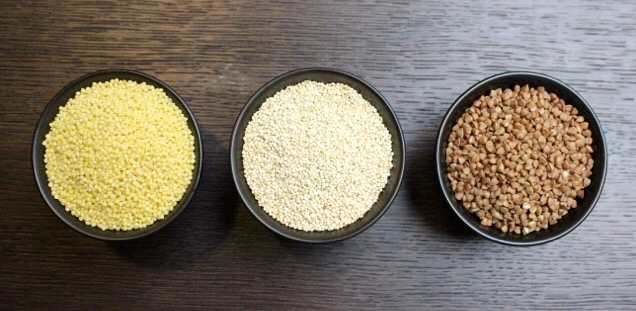Many people have probably heard more than once about the benefits of whole grains and the harms of wheat bread. Whole grains are praised by authors of health food blogs, by advertisers, and by inscriptions on packages of healthy (or supposedly healthy) foods.
So what is whole wheat? Why do we need it? And what foods should we include in our diet to get enough whole grains? Let's find out.
What are whole grains
Whole grains of wheat consist of a floral shell (bran), an endosperm, and a grain germ. Whole wheat has the right to be called the product, which eventually retained all the parts of the natural grain from the formation until maturation and arrival on the store shelf. The benefits of whole wheat flour are undeniable, because it has both germ and bran. This means that the whole grain product that comes to your table carries all the benefits of grains.
Cereals are one of the main food groups that make up the foundation of a healthy diet. The inconspicuous grain is an essential source of nutrients including fiber, B vitamins such as thiamine, riboflavin, niacin and folate, minerals such as iron, magnesium and selenium, and valuable phytonutrients (plant lignin, antioxidants, phytic acid and other compounds).
And while most of us follow the recommendations for daily cereal intake (150-200 grams per day depending on age, gender and level of physical activity), it's likely that we're focusing on the wrong cereal products. After all, half of our cereal intake should be whole-grain foods, says the U.S. Department of Agriculture. And you most likely ate a sandwich of white flour bread for breakfast, ate soup and croutons for lunch, and drank tea and croutons in the evening, completely devoid of healthy bran... But at the same time you looked through a fashionable magazine, in which you saw the proverbial phrase "The benefits of whole grain pasta are..."

Where to get whole grains
Whole-grain products are widely available in supermarkets today. These include amaranth, barley, brown rice, buckwheat, corn, millet, quinoa, and wheat (bulgur, farro, spelt, etc.). Whole-grain flours made from spelt, spelt, oats, wheat, rye, barley, buckwheat, peas, and spelt, including extra-fine milled ones, are also available.
By comparison, processed cereals are subjected to deep industrial processing - before sowing, the manufacturer etched the seeds with pesticides, then added "doping" to the soil in the form of mineral fertilizers, and the ears of grain were treated with herbicides to deal with weeds. It does not take a deep knowledge of the agricultural process to understand that the structure and chemical composition of the original grain has changed. The structure of the grain becomes smoother, and the grain itself is almost useless. That is, it is hardly worth waiting for any super useful effect from the usual (most common) rye porridge or a loaf of white bread from wheat flour of the highest grade. The same cannot be said about such delicacies as porridge from rye whole grains or bread from whole wheat flour, the benefits of which will be very significant for the body.
Why we need whole grains
Whole grains contain dietary fiber, which helps to lower cholesterol and blood sugar levels, reduce risks of cardiovascular diseases, type II diabetes, delay digestion of fats and carbohydrates and, therefore, minimize the chance of obesity.
Foreign studies have proven that phrases like "whole wheat flour" and "health benefits" are kind of synonyms. Western experts proved that women who ate a sufficient portion of whole-grain products daily (about 20-35% of the total diet) were much less likely to develop diabetes, cardiovascular diseases, than those ladies who relied on processed grain products.
The B vitamins found in whole grains are essential for proper metabolism (by eating whole grain products, a person will have a long enough feeling of satiety) and are vital for maintaining a healthy nervous system. This is what experts have in mind when they talk about the beneficial effects of whole grain products on the body, such as the benefits of whole grain bread.
How to improve your diet and eat more whole foods
To incorporate as many grains as possible into your diet, start replacing the refined grains you eat daily with a variety of whole grain products. Experiment with different kinds of whole grains and choose the ones that work best for you.
For example, replace white rice with brown rice, choose buckwheat, quinoa, bulgur instead of pasta and potatoes as a side dish, give up white bread in favor of whole wheat bread. It would be ideal if you make your own bread at home. Remember that whole wheat flour is good for your body.
Here are some recipes for inspiration with links to the store where you can buy orgnic whole wheat products:
Millet with chickpeas, turmeric and carrots
Black rice with broccoli
Quinoa and black bean soup



You must be logged in to post a comment.